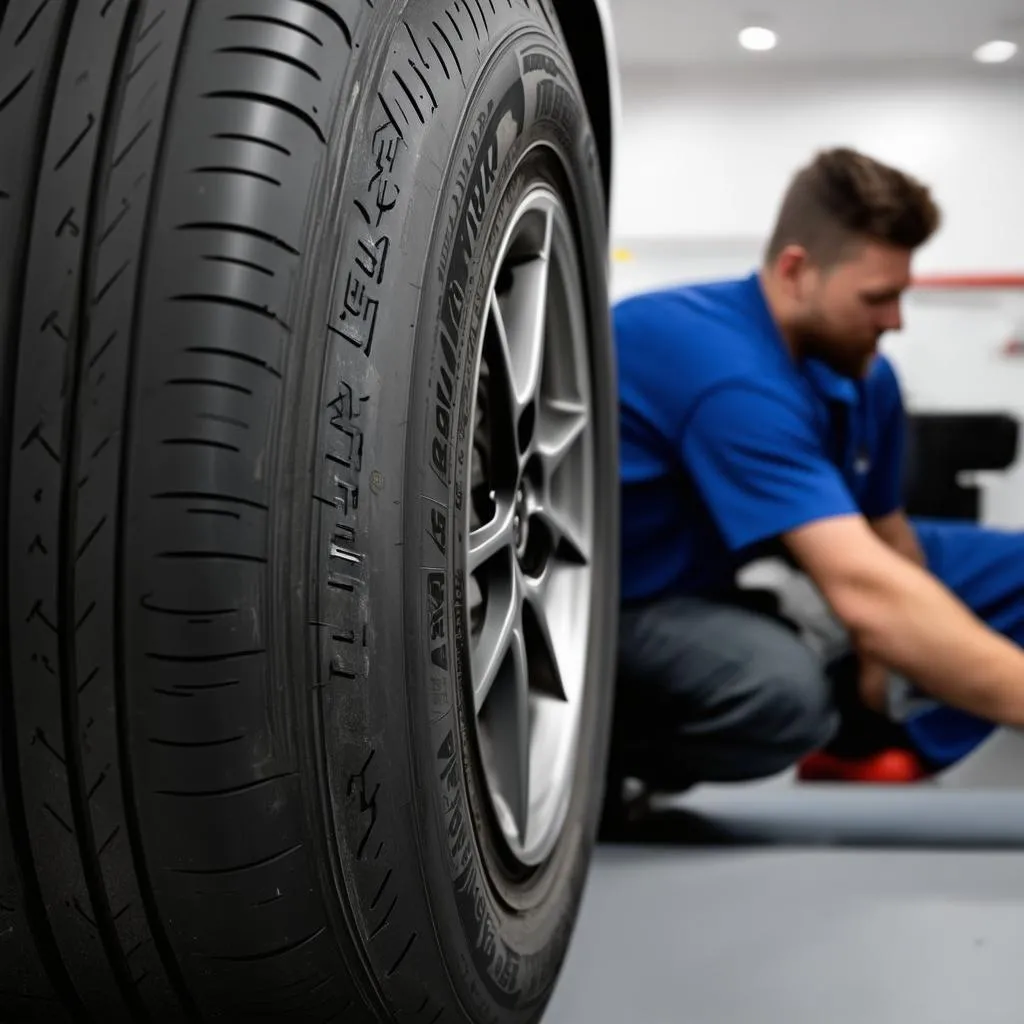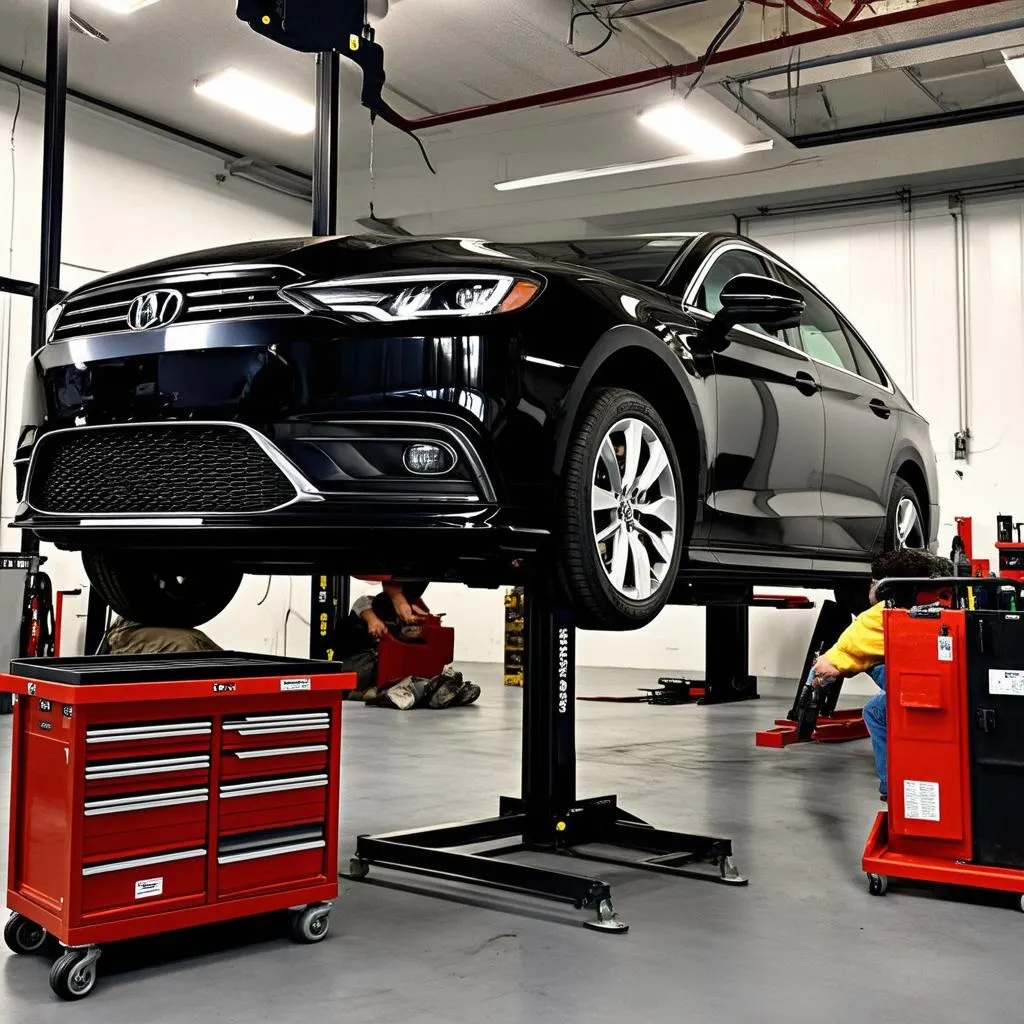Have you ever been cruising down the highway, enjoying the scenery, only to have your car start shaking like a washing machine on spin cycle once you hit 60 mph? I have, and let me tell you, it’s not a smooth ride! It’s not just annoying; it could signal a serious underlying issue with your car. Luckily, as a content creator for Diag XCar specializing in automotive repair, particularly car electrical systems, I’m here to break down the mystery of why your car vibrates over 60 mph and what you can do about it.
Decoding the Shakes: What Does It Mean?
Before we dive into the solutions, let’s get a better understanding of the problem. A vibrating car at high speeds can be unnerving, but the cause isn’t always obvious.
From a mechanic’s perspective: Vibrations often point to a problem with a rotating component in your car. Imagine a washing machine with an unbalanced load—the faster it spins, the more it shakes. Similarly, if a tire, wheel, axle, or driveshaft is off-kilter, the imbalance amplifies at higher speeds.
Thinking technically: The faster your car goes, the harder all its components have to work to maintain stability. If there’s an issue with your suspension system, alignment, or even something as simple as tire pressure, the vibrations can become more pronounced at higher speeds.
The economic angle: Ignoring vibrations can lead to more serious and expensive problems down the line. A small issue with a tire could turn into a dangerous blowout if not addressed. Regular maintenance and addressing issues early on can save you big bucks in the long run.
Getting to the Root of the Vibration
Okay, so your car is vibrating over 60 mph. What’s the culprit? Let’s explore some common causes:
1. Tire Troubles: The Usual Suspect
Scenario: Imagine you’re driving a sleek Audi A4 down the California coast on Highway 1. You hit 65 mph, and the steering wheel starts to tremble.
Often, the main culprit behind these vibrations is a tire issue. It could be:
- Unbalanced tires: This happens when the weight distribution around the tire and wheel assembly is uneven, causing a wobble that worsens with speed.
- Misaligned wheels: If your wheels are pointing in slightly different directions, it can cause your car to pull to one side and vibrate, especially at higher speeds.
- Tire wear and tear: Worn-out tires, uneven tread wear, or even a bulge in the sidewall can throw off the balance and create vibrations.
- Low tire pressure: Underinflated tires can cause vibrations, especially at higher speeds, as the tire flexes more.
Fix it: Have your tires rotated and balanced regularly. Get your alignment checked at least once a year or if you hit a nasty pothole. Inspect your tires for wear and tear, and ensure they’re inflated to the correct pressure.
2. Worn-out Suspension Components
Scenario: Picture yourself cruising down Michigan Avenue in Chicago in your classic Ford Mustang. As you accelerate past 60 mph, you feel a shudder through the entire car.
Your car’s suspension system is responsible for a smooth ride by absorbing bumps and dips in the road. Worn-out components like:
- Shocks and struts: These dampen the up-and-down movement of your wheels. Worn shocks or struts can cause excessive bouncing and vibrations.
- Ball joints and tie rod ends: These components connect the wheels to the steering and suspension systems. Worn-out parts can cause looseness and vibrations.
Fix it: Have a mechanic inspect your suspension system regularly, especially if you frequently drive on rough roads. Replacing worn-out components can significantly improve your ride quality and safety.
3. Alignment Issues: Steering You Wrong
Scenario: You’re driving a brand new Tesla Model S on autopilot down a straight stretch of highway in Nevada. You notice the car veering slightly to the left, and a vibration creeps in as you surpass 60 mph.
Proper wheel alignment is crucial for a smooth and stable ride. Even a slight misalignment can lead to:
- Vibrations at high speeds: Your tires are constantly fighting against each other, creating friction and vibrations.
- Uneven tire wear: Misaligned wheels cause one side of the tire to wear faster than the other.
- Reduced fuel efficiency: Misalignment creates drag, forcing your engine to work harder.
Fix it: Have your alignment checked and adjusted by a professional mechanic, especially after hitting a curb or experiencing a significant impact.
4. Drivetrain Dilemmas: The Hidden Culprits
Scenario: You’re cruising down the Autobahn in a powerful BMW M5. You hit 100 mph (just kidding, stick to the speed limit!), and a rhythmic thumping starts from under the car.
Your car’s drivetrain transmits power from the engine to the wheels. Issues within this system can cause vibrations, especially at high speeds. Common culprits include:
- Worn-out U-joints: These connect the driveshaft to the transmission and differential. Worn U-joints can create a clunking or vibrating sensation.
- Damaged axles: A bent or damaged axle can throw off the balance of your wheels, leading to vibrations.
- Worn-out CV joints: These allow for smooth turning while transmitting power to the wheels. Worn CV joints often produce a clicking sound when turning, but they can also cause vibrations.
Fix it: Diagnosing and repairing drivetrain issues can be complex. Take your car to a trusted mechanic specializing in drivetrain repair for a thorough inspection.
 Car Tire & Wheel Imbalance
Car Tire & Wheel Imbalance
FAQs: Your Burning Questions Answered
Still have questions about your car shaking at higher speeds? Here are some common queries:
Q: Can a bad wheel bearing cause vibration at 60 mph?
A: Absolutely! A worn-out wheel bearing can create a rumbling or grinding noise that gets louder with speed, often accompanied by vibrations.
Q: Is it dangerous to drive with a vibrating car?
A: It depends on the severity and cause. A slight vibration might be a minor annoyance, but ignoring it could lead to more serious issues. Severe vibrations can affect your control of the car and pose a safety hazard. Always err on the side of caution and get it checked out by a mechanic.
Q: How often should I get my tires balanced and rotated?
A: It’s generally recommended to have your tires rotated and balanced every 5,000 to 7,500 miles, or as recommended by your vehicle manufacturer.
Q: Can I fix car vibrations myself?
A: While some minor issues like low tire pressure can be addressed at home, it’s best to leave the diagnosis and repair of more complex problems like wheel balancing, alignment, and suspension work to the professionals.
Smooth Driving Ahead: Taking Action
Experiencing vibrations in your car, especially at higher speeds, is never a good sign. It’s crucial to address the issue promptly to prevent further damage and ensure your safety on the road. Remember:
- Regular maintenance is key: Stick to your car’s recommended maintenance schedule, including tire rotations, alignments, and suspension checks.
- Don’t ignore the signs: Even minor vibrations can indicate a developing problem.
- Consult a professional: When in doubt, take your car to a trusted mechanic for a thorough inspection and diagnosis.
 Car on Lift in Repair Shop
Car on Lift in Repair Shop
Keep Exploring: More Car Care Insights Await
Interested in learning more about keeping your car in tip-top shape? Check out these related articles on our website:
- Understanding Your Car’s Suspension System
- The Importance of Regular Wheel Alignments
- Common Tire Problems and How to Identify Them
And remember, a smooth ride starts with a well-maintained car!
Need Help? We’re Here for You!
If you’re experiencing car troubles or need assistance with diagnostic tools, don’t hesitate to reach out to us on WhatsApp at +84767531508. Our team of auto repair experts is available 24/7 to answer your questions and provide expert advice. Drive safe!